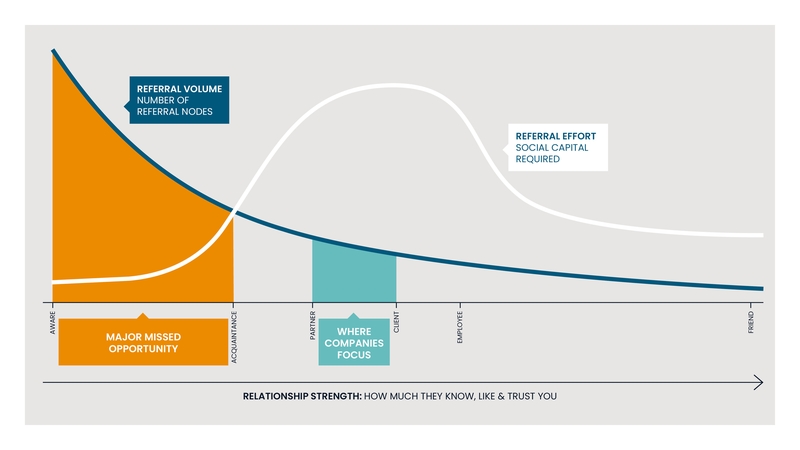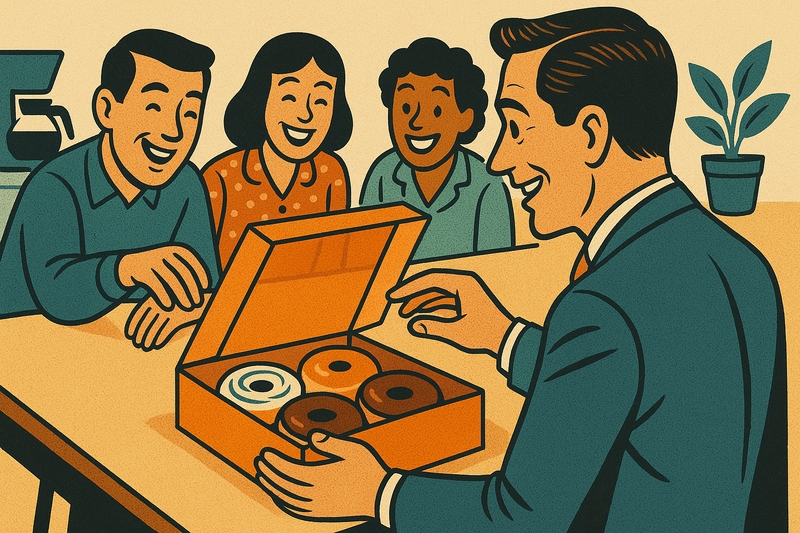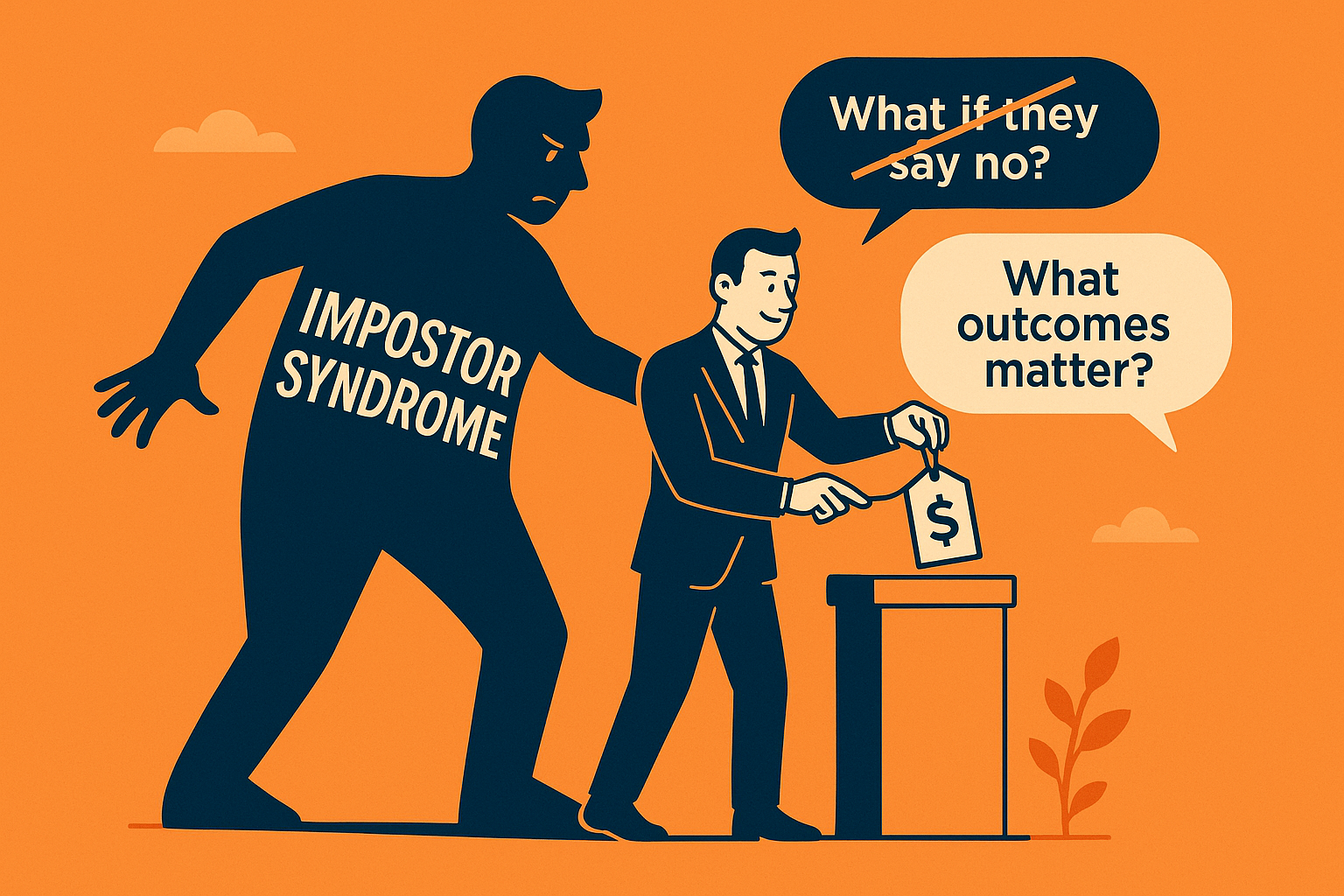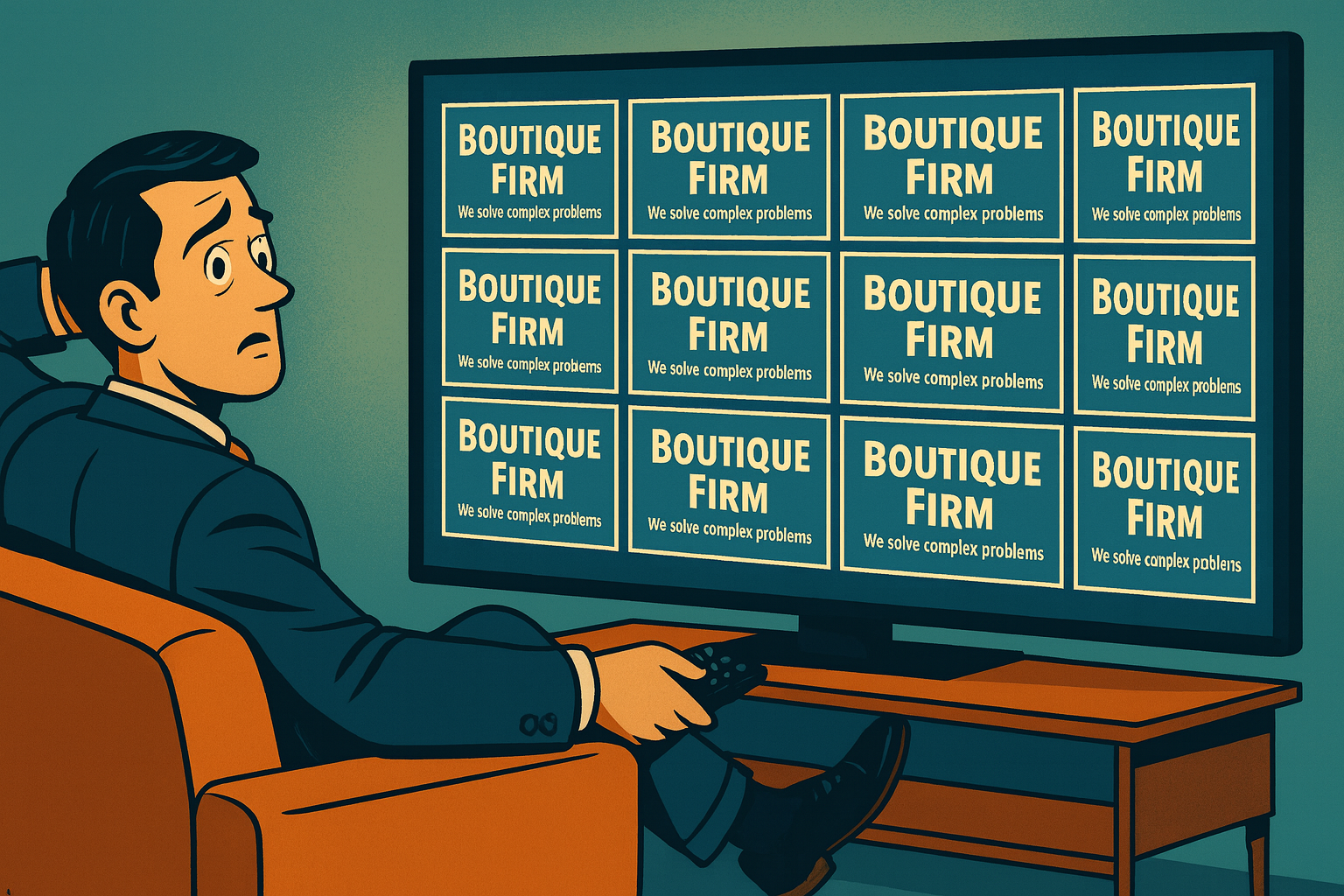Early on in my first business - the marketing agency - I thought I had figured it all out. The relationships I had built up through the years were paying off - my contacts were referring business to me and my fledgling firm. Then as we did more work for clients, they would mention my agency to others in their network. But about a 18 months in it all ground to a halt.
I learned a hard truth about the way many boutique firm founders think about and leverage relationships to grow their firms: Believing “good work builds relationships” without a deliberate affinity strategy is a recipe for stagnation.
We've all heard the phrase "we do business with those we know, like, and trust." But the mistake we've made is assuming that those three things happen only through the act of working together.
Defining Relationships
You ask any consulting firm founder where they get most of their business, and they will undoubtedly tell you "from relationships". You ask them what makes for the best clients, and they will undoubtedly tell you "strong relationships". Think about the client-consultant relationship. What makes a good one?
Let's first define relationship.
One definition is "the way in which two or more people regard and behave toward each other."
Another one that I like, is one I recently heard from Simon Sinek "two people who have decided to grow/improve together."
In both definitions we can infer that there is a level of trust and affinity involved. The first definition is broad, because it can apply to positive and negative relationships. But if we assume positive, then the only reason people regard eachother positively is if they have some level of trust and affinity between them.
And if we use Simon Sinek's definition, then the only way you are going to commit to growing/improving together, is if you have trust and affinity toward eachother. And isn't that what a client-consultant relationship is all about? The client agrees to be open about sharing their problems, and the consultant agrees to openly share their expertise and advice. Both agree to work together to learn and improve, in an effort to solve the client's problem.
Mutual trust; shared progress. That's what it's all about.
The Four Pillars of Affinity
If we want someone to buy our consulting services, we need them to like us. We need them to build affinity to our brand (the boutique firm) through relationships with our ideas and out people.
So how do we build affinity?
𝗦𝗶𝗺𝗶𝗹𝗮𝗿𝗶𝘁𝘆 - we are drawn to those who share similar values, beliefs, interests, and personality traits. In the professional setting this means that showing that we have been in our prospective clients' shoes, understand their problems and pain points, and have similar beliefs in how to resolve them.
𝗣𝗿𝗼𝘅𝗶𝗺𝗶𝘁𝘆 - "the mere exposure effect" or frequent inteaction increases the liklihood of affinity and familiarity. In the professional setting this means that consistently exposing our prospective clients to our ideas and our people increases the likelihood of affinity.
𝗥𝗲𝗰𝗶𝗽𝗿𝗼𝗰𝗶𝘁𝘆 - when people feel that we have affinity toward them, they are more likely to reciprocate that affinity. In the professional setting, giving - the giving of information or advice - can be seen as an act showing affinity, making it more likely that our prospective clients will reciprocate.
𝗙𝗮𝗺𝗶𝗹𝗶𝗮𝗿𝗶𝘁𝘆 - we take comfort in people and things we are familiar with. Familiarity puts us at ease. In the professional setting, this means that becoming familiar to our prospective clients can increase the likelihood of a business relationship, because you are more likely to do business with someone you feel comfortable with.
Affinity decreases risk. If I am familiar with you, through consistent exposure to your ideas, and through those ideas I feel that you really understand me and the issues I am dealing with, and the ideas you have shared have helped me think differently, and reframe those issues, I now don't see you as risky.
So to build affinity you need to: show you've walked in their shoes, regularly surface your firm's ideas to stay top of mind, give valuable insights or micro-advice before pitching, and offer low-risk "demo" engagements (e.g. webinars, workshops, mini-assessments).
"Let Great Work Speak for Itself" Fails at Scale
Reputation isn't a growth strategy. A solid reputation is a baseline requirement, but it isn't enough to scale a firm. I've written about this in detail before in my The Lies We Tell Ourselves series, but here is a quick summary:
Lie #1: “Referrals are predictable.” Word‑of‑mouth is wonderful—until a key contact quits, gets laid off, or simply sends the wrong fit prospect. Hope is not capacity planning, and relationships don’t scale unless you deliberately operationalize how people hear about, talk about, and trust your firm. Marketing is the engine that turns random whispers into a reliable signal.
Lie #2: “Awards and testimonials close deals.” Prospects don’t care about your Inc. 5000 badge any more than they care about your Clutch reviews—unless you first prove you understand their problem better than anyone else. The context that earns that trust is your IP: the frameworks, mental models, and methodologies that reframe the client’s challenge so powerfully they say, “I’ve never thought about it that way.”
Without a proactive affinity engine, you are leaving your firm's growth to chance through referrals, conference small talk, and random LinkedIn engagements.
Building an Affinity Engine
Imagine you just started a new job. You are nervous - nobody knows much about you. You want to make a good first impression. You want your new coworkers to like you. So what do you do?
You bring donuts of course!
People love you. You are the talk of the office... until the next day. Nobody remembers your donuts from the day before. So the following day you bring in more donuts. And then again, the next week, and the week after that. Now you really are the talk of the office. You walk past someone you've never met in the hallway. He stops and says "Hey! you're the donut guy, right? Thanks for bringing those in all the time!"
Now you're the donut guy (or gal).
That's what an affinity engine looks like.
So, obviously sending donuts to your prospective clients consistently isn't going to win you their business, and is probably fairly cost and logistically prohibitive. But what if instead of donuts, you consistantly share your ideas, methodologies, frameworks, data, and more? Your ideas, when shared consistently are like the donuts.
Think about the relationship journey you want to take your ideal clients on. What type of engagement cadence is necessary for that journey to become reality? Will you do monthly newsletters whre you share research insights (proximity)? Will you host quarterly peer roundtables or "office hours" where you discuss core pain points and issues (similarity)? What about a weekly podcast where you invite industry peers, and then ask them to recommend your next guest (reciprocity)?
The format and medium doesn't matter much, as long as you focus on the 4 pillars of affinity, and keeping everything tied to a core thesis - a POV on the market. You want to be known and liked for something in particular. Now, all these people who have never worked with you before, but have been consistently exposed to your expertise, are now much more likely to refer you to others, or to become clients themselves. And there are many more of them, than there are existing clients.

Measuring Affinity
When it comes to measuring affinity, both volume and quality matter. You will want to measure things like event attendance, email open rates, LinkedIn engagement, brand and direct website traffic, and returning website traffic. But you will also want to overlay all of those with an ICP qualified layer (e.g. % of LinkedIn engagements that came from the right types of people and companies). And if you want to take it up a level from that, you can also measure what percentage of them came from people at your target accounts.
Handshakes Aren't Enough
The problem that many first face, once they reach a certain scale, is that natural churn matches whatever new business is able to be driven through traditional 1:1 business development means. Because building relationships takes time, and those responsible for business development inside boutique firms, are usually juggling several responsibilities along with business development. And I've already written about why simply bringing on more "rainmakers" isn't usually a good idea.
This is where the concepts discussed here - building affinity at scale - come into play.
Several Ways I Can Help
- If you are looking to build our your core thesis - improve your positioning and develop your strategic narrative, you can start by signing up for my Differentiate to De-Risk Positioning Intensive.
- If you are looking for more hands-on support in your growth journey, I have an opening for one client starting in October, and another starting in January.
- Want to know if your firm is positioned for growth? Take the Positioning Effectiveness Assessment.







